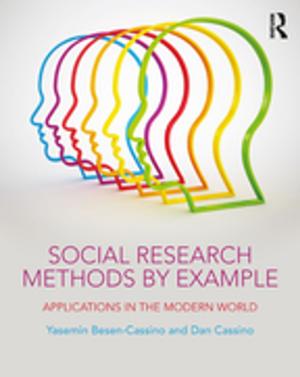Identities, Boundaries and Social Ties
Nonfiction, Social & Cultural Studies, Social Science, Sociology| Author: | Charles Tilly | ISBN: | 9781317257875 |
| Publisher: | Taylor and Francis | Publication: | November 17, 2015 |
| Imprint: | Routledge | Language: | English |
| Author: | Charles Tilly |
| ISBN: | 9781317257875 |
| Publisher: | Taylor and Francis |
| Publication: | November 17, 2015 |
| Imprint: | Routledge |
| Language: | English |
Identities, Boundaries and Social Ties offers a distinctive, coherent account of social processes and individuals' connections to their larger social and political worlds. It is novel in demonstrating the connections between inequality and de-democratization, between identities and social inequality, and between citizenship and identities. The book treats interpersonal transactions as the basic elements of larger social processes. Tilly shows how personal interactions compound into identities, create and transform social boundaries, and accumulate into durable social ties. He also shows how individual and group dispositions result from interpersonal transactions. Resisting the focus on deliberated individual action, the book repeatedly gives attention to incremental effects, indirect effects, environmental effects, feedback, mistakes, repairs, and unanticipated consequences. Social life is complicated. But, the book shows, it becomes comprehensible once you know how to look at it.
Identities, Boundaries and Social Ties offers a distinctive, coherent account of social processes and individuals' connections to their larger social and political worlds. It is novel in demonstrating the connections between inequality and de-democratization, between identities and social inequality, and between citizenship and identities. The book treats interpersonal transactions as the basic elements of larger social processes. Tilly shows how personal interactions compound into identities, create and transform social boundaries, and accumulate into durable social ties. He also shows how individual and group dispositions result from interpersonal transactions. Resisting the focus on deliberated individual action, the book repeatedly gives attention to incremental effects, indirect effects, environmental effects, feedback, mistakes, repairs, and unanticipated consequences. Social life is complicated. But, the book shows, it becomes comprehensible once you know how to look at it.















